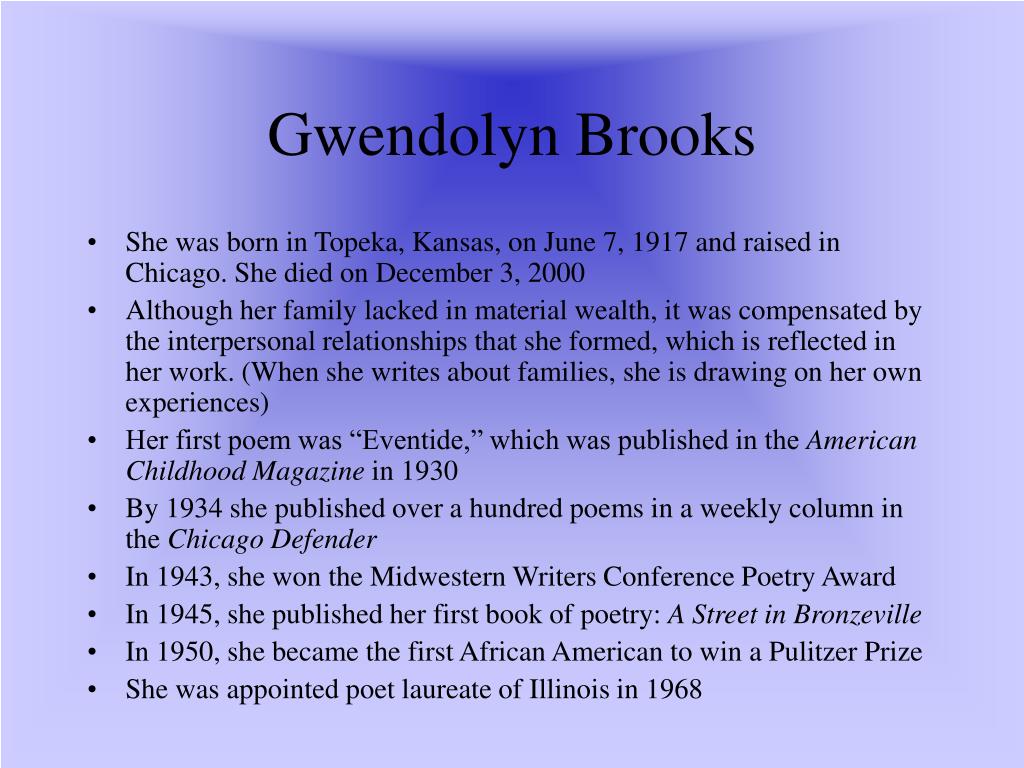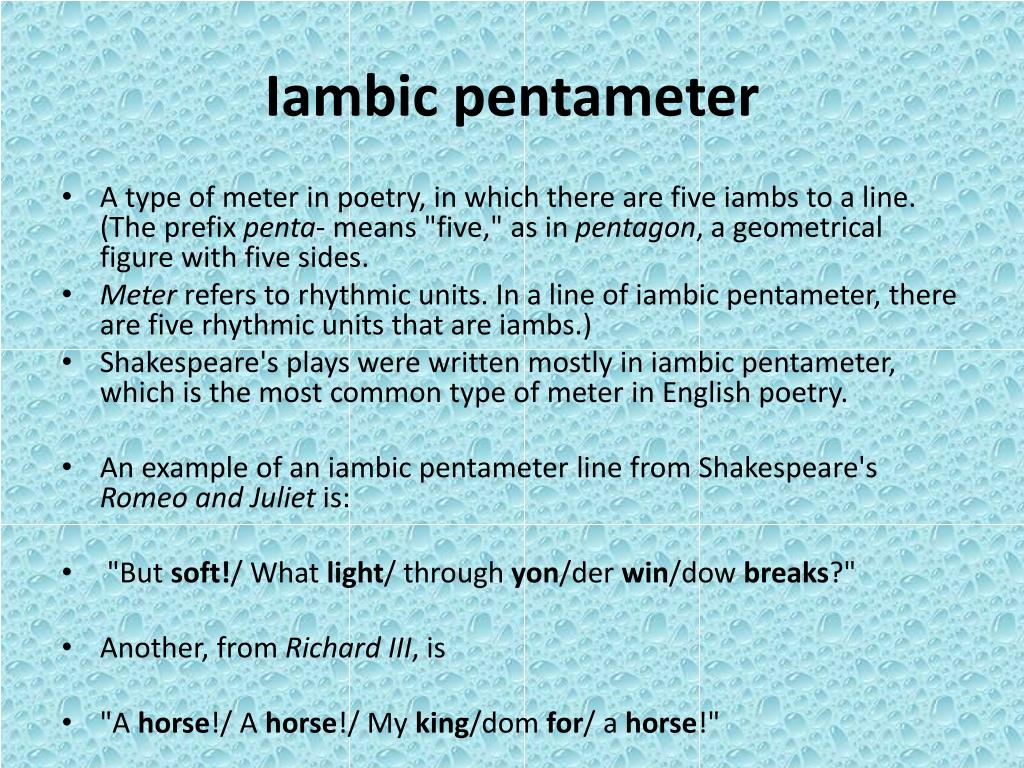
The meter became synonymous with a high style of poetry throughout the Renaissance, and its versatility allowed it to be carried through the centuries that followed. Furthermore, it provided just enough structure to challenge him creatively. Shakespeare used this meter because the rhythm of five beats per line closely mimicked spoken English at the time. Iambic pentameter was first used in ancient Greek poetry, but it gained popularity in English poetry in the sixteenth century, thanks, in large part, to Shakespeare. If you’re interested in learning more about the fundamentals of poetry, check out this blog post ! Why did Shakespeare use iambic pentameter? Meter: Meter refers to the overall rhythmic structure of a poem, created by the number of syllables in a line and the arrangement that they’re stressed in. In English poetry, the most common feet are the iamb ( da-DUM ), the trochee ( DA-dum ), the anapest ( da-da-DUM ), and the dactyl ( DA-dum-dum ). Notice the root pent in pentameter, referring to the Greek word pente, or “five.”įeet: A foot is a unit of meter in poetry that determines which syllables in a row are stressed. Pentameter: Pentameter is a type of verse consisting of five metrical feet per line. Each da-DUM in iambic pentameter is a single iamb. Iambic: Iambs are units in poetry consisting of two syllables, with the first syllable unstressed and the second syllable stressed. But what do all of these words - iambic, pentameter, feet, meter - mean? In poetry terms, each line of iambic pentameter contains five metrical feet, with each foot consisting of an unstressed syllable followed by a stressed syllable. However you use it, iambic pentameter should give your writing a cadence that establishes a sense of order and flow. Updike probably doesn’t expect his reader to theatrically stress every other syllable ( The MAN who BROKE inTO the LAB, the DOG ), but even the subtle patterning gives the language some form.


“The man who broke into the lab, the dog / That trotted in obediently after” uses iambic pentameter to give the prose a more subtle musicality. Sometimes the rhythm isn’t quite so obvious. Where civil blood makes civil hands unclean. One of the most famous examples of iambic pentameter is the opening passage of Shakespeare’s Romeo and Juliet :

The pattern that emerges sounds like this: da-DUM da-DUM da-DUM da-DUM da-DUM. Iambic pentameter (pronounced eye-AM-bik pen-TAM-i-ter ) is a rhythmic pattern that consists of ten syllables per line, with alternating stressed and unstressed syllables. Grammarly helps you communicate confidently Write with Grammarly What is iambic pentameter?


 0 kommentar(er)
0 kommentar(er)
